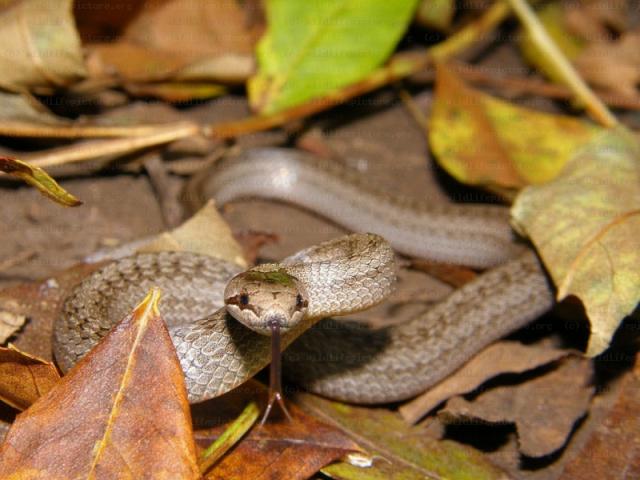Scientific classification:
Kingdom: Animalia
Phylum: Chordata
Subphylum: Vertebrata
Class: Reptilia
Order: Squamata
Suborder: Serpentes
Family: Colubridae
The Aesculapian Snake (Elaphe longissima or Zamenis longissimus) is a snake native to Europe.
It is a large slender nonvenomous snake, which is an excellent tree-climber. When young, it feeds on lizards. As an adult its diet consists of rodents, moles, shrews, young birds and eggs. It kills by constriction, or by suffocation by eating its victim head first.
Females lay clutches of 5-8 eggs in June/July.
A self-sustaining colony of Aesculapian Snakes (sometimes referred to as the rat snake) established itself in North Wales during the 1970s. Although this snake is an alien species to the United Kingdom, it is considered harmless and poses no threat. There is a small colony within the Welsh Mountain Zoo and are also found in the nearby gardens. This species is also found in Regent's Park and along the Regent's Canal in the centre of London. The colony is believed to have been founded by escapees from London Zoo which is located in the Park and adjacent to the Canal.
This species is also associated with Greek Mythology and Medical History. It is said that the staff of Aesculapius has Elaphe longissima coiled around it. This is not to be confused with the staff of Hermes (the winged staff with two snakes). This species is also found in some places of Austria and Germany where Roman temples of healing were established. There have been a couple color morphs discovered with this species: Amelanism (albino), and Melanism.
It appears on the medical symbol, the Rod of Aesclepius.
It is common in the Loire Valley region of France, as well as in the Bieszczady Mountains and Beskidy Mountains in Poland. However, facing extinction.
Alfred Edmund Brehm: Az állatok világa - Légrády testvérek (1905)
http://hu.wikipedia.org/wiki/Erdei_sikl%C3%B3
http://www.mme.hu/khvszweb/index.php?option=com_content&view=article&id=86:erdei-siklo-zamenis-longissimus&catid=49:hazai-huellk&Itemid=90&lang=en
http://www.freeweb.hu/hobbiallat/cikkek/hullo60.htm
